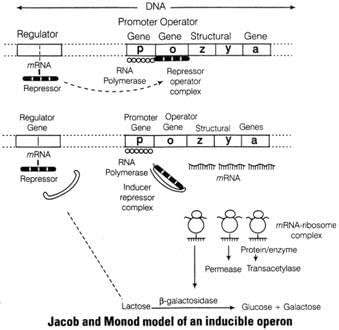NEET Exam > NEET Tests > Biology Class 12 > Test: Translation & Regulation of Gene Expression - NEET MCQ
Test: Translation & Regulation of Gene Expression - NEET MCQ
Test Description
10 Questions MCQ Test Biology Class 12 - Test: Translation & Regulation of Gene Expression
Test: Translation & Regulation of Gene Expression for NEET 2025 is part of Biology Class 12 preparation. The Test: Translation & Regulation of Gene Expression questions and answers have been
prepared according to the NEET exam syllabus.The Test: Translation & Regulation of Gene Expression MCQs are made for NEET 2025 Exam. Find important
definitions, questions, notes, meanings, examples, exercises, MCQs and online tests for Test: Translation & Regulation of Gene Expression below.
Solutions of Test: Translation & Regulation of Gene Expression questions in English are available as part of our Biology Class 12 for NEET & Test: Translation & Regulation of Gene Expression solutions in
Hindi for Biology Class 12 course. Download more important topics, notes, lectures and mock
test series for NEET Exam by signing up for free. Attempt Test: Translation & Regulation of Gene Expression | 10 questions in 10 minutes | Mock test for NEET preparation | Free important questions MCQ to study Biology Class 12 for NEET Exam | Download free PDF with solutions
Test: Translation & Regulation of Gene Expression - Question 1
Which one of the following enzyme brings about hydrolysis of lactose to glucose and galactose?
Detailed Solution for Test: Translation & Regulation of Gene Expression - Question 1
Test: Translation & Regulation of Gene Expression - Question 2
The diagram shows an important concept in the genetic implication of DNA. Fill in the blanks A to C.

Detailed Solution for Test: Translation & Regulation of Gene Expression - Question 2
Test: Translation & Regulation of Gene Expression - Question 3
In the Lac operon system, β-galactosidase is coded by
Detailed Solution for Test: Translation & Regulation of Gene Expression - Question 3
Detailed Solution for Test: Translation & Regulation of Gene Expression - Question 4
Test: Translation & Regulation of Gene Expression - Question 5
Repressor protein is produced by
Detailed Solution for Test: Translation & Regulation of Gene Expression - Question 5
Test: Translation & Regulation of Gene Expression - Question 6
During splicing, the exons are joined and the enzyme which catalyses this reaction is
Detailed Solution for Test: Translation & Regulation of Gene Expression - Question 6
Detailed Solution for Test: Translation & Regulation of Gene Expression - Question 7
Test: Translation & Regulation of Gene Expression - Question 8
In E.coli, the lac operon gets switched on when:
Detailed Solution for Test: Translation & Regulation of Gene Expression - Question 8
Test: Translation & Regulation of Gene Expression - Question 9
To initiate translation, the mRNA first binds to
Detailed Solution for Test: Translation & Regulation of Gene Expression - Question 9
Test: Translation & Regulation of Gene Expression - Question 10
Locations on sites in the human DNA where single base DNA differences occurs are called
Detailed Solution for Test: Translation & Regulation of Gene Expression - Question 10
|
78 videos|277 docs|174 tests
|
Information about Test: Translation & Regulation of Gene Expression Page
In this test you can find the Exam questions for Test: Translation & Regulation of Gene Expression solved & explained in the simplest way possible.
Besides giving Questions and answers for Test: Translation & Regulation of Gene Expression, EduRev gives you an ample number of Online tests for practice





















